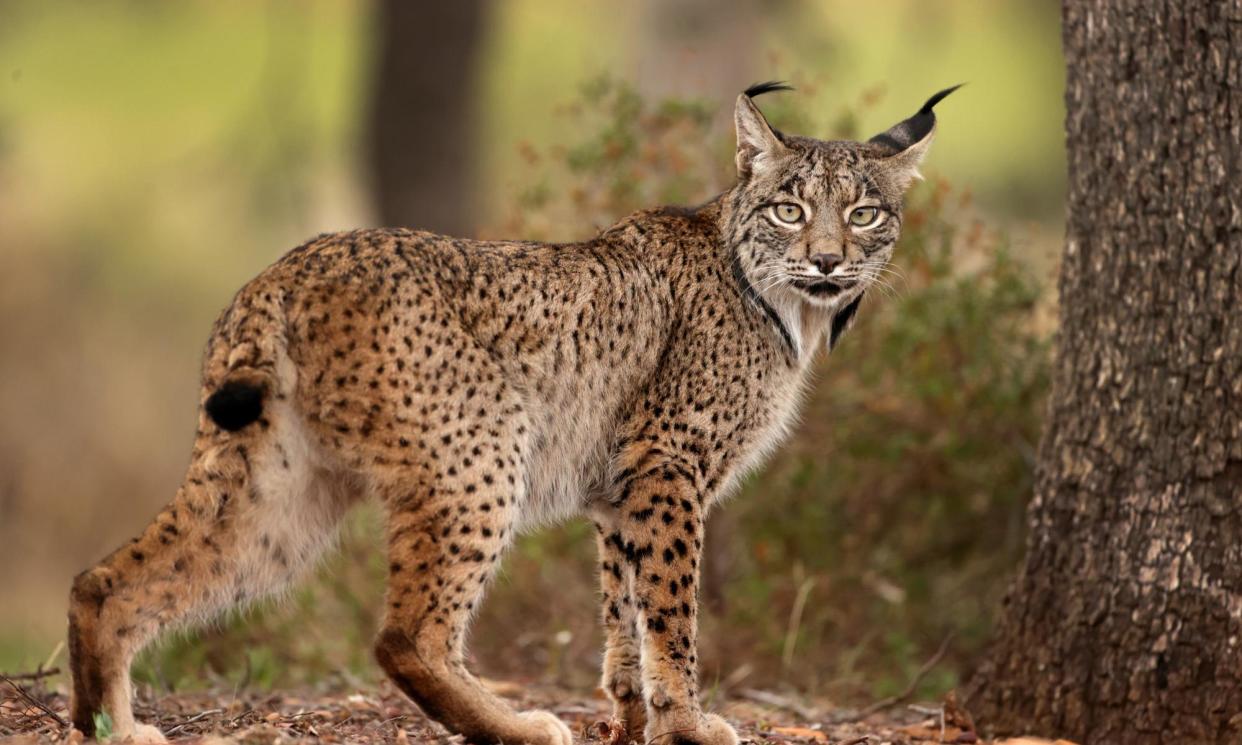Iberian lynx no longer endangered after numbers improve in Spain and Portugal

Less than a quarter of a century after the Iberian lynx was feared to be only a whisker away from extinction, populations of the animal have recovered enough across Spain and Portugal for it to be moved from “endangered” to “vulnerable” on the global red list of threatened species.
The change in status, announced on Thursday by the International Union for Conservation of Nature (ICUN), is the result of a two-decade-long effort from a coalition of partners including the EU and regional and national governments in Spain and Portugal, as well as wildlife NGOs and local people.
According to the latest census, the lynx population on the peninsula has risen from just 94 in 2002 to 2,021 last year, with the overwhelming majority – almost 86% – found in Spain.
Lynx pardinus numbers plummeted during the 20th century, as thousands were killed because of Franco-era laws to get rid of creatures deemed to be vermin. Others died out because of catastrophic, disease-driven drops in the rabbit populations that make up 90% of the lynx’s diet, and because of the destruction of the cat’s habitats.
Craig Hilton-Taylor, head of the red list unit at IUCN, said the “great success story” was down to careful, collaborative initiatives to expand and diversify lynx numbers and populations across different areas, build up rabbit numbers, and raise awareness.
“Over the next 100 years, we can probably get to the lynx being fully recovered in its native range,” he said. “Climate change is the worrying factor because we don’t know what it’s going to do – we’ve seen an increase in fires in the Mediterranean area, so how that’s going to impact on the lynx is yet to be determined. So this is a huge success but there’s a long way to go to get the species back to where it should be.”
Javier Salcedo, the coordinator of the majority EU-funded Life Lynxconnect project, said it had been astonishing to see the animal move from being “critically endangered” to “endangered” and now to “vulnerable” over the course of two decades.
“The hardest part was the start: at the beginning of this century, everyone knew the Iberian lynx was threatened but we didn’t really realise how complicated the situation was,” he said. “The tracking projects and census that were carried out at the beginning of the 21st century showed us that the situation was far worse than anyone imagined: there were only two populations – in Andújar-Cardeña and in Doñana, both in Andalucía – and there were barely 100 lynxes.”
Ramón Pérez de Ayala, a lynx expert at WWF Spain, said the conservation effort was now reaching its middle point. “We’re about halfway down the path we’ve set ourselves,” he said. “We wanted there to be 750 females of reproductive age by 2040 and now there are 406.”
Many of the familiar threats have not gone away, he added. Last year, 144 lynxes were killed on Spanish and Portuguese roads, and 45 more died from disease or other causes. But the biggest worry – the “sword of Damocles” – is the damage being done to rabbit populations by rabbit haemorrhagic disease and by the loss of habitat for the lynx’s preferred prey.
“Rabbit numbers are very bad and we’re seeing populations down 35% in regions such as Castilla-La Mancha over the past few years,” said Pérez de Ayala. “In Portugal, rabbit numbers have declined by 90% over the past 10 years. Things are so bad in the natural areas where rabbits live that the predators are going to be doing better than the prey, which is pretty paradoxical.”
Salcedo said that while he was heartened by the progress made to save “an iconic part of Iberian wildlife”, there was no room for complacency.
“Let’s not forget that there’s still much to be done,” he said. “And even when it’s all done, we’ll need to carry on working so that this doesn’t all happen again.”


